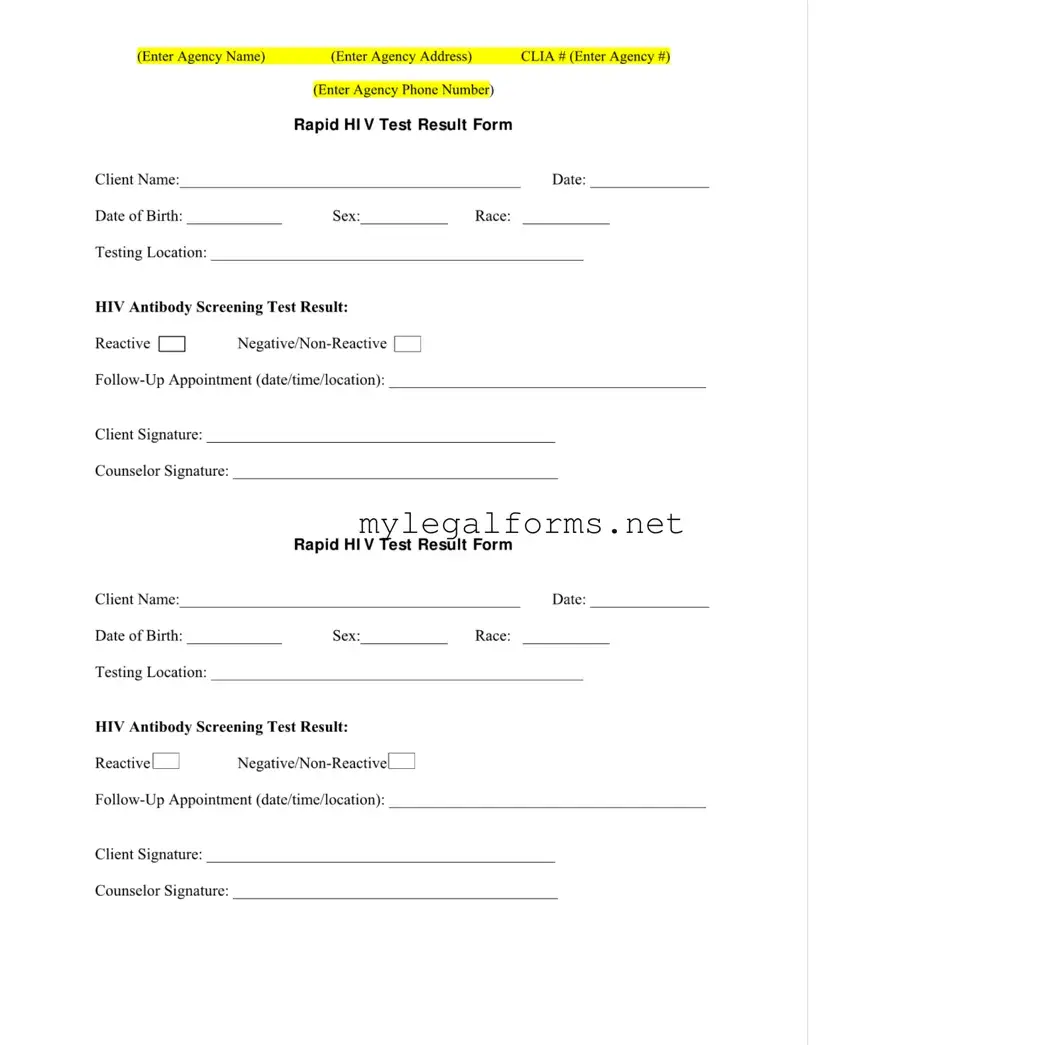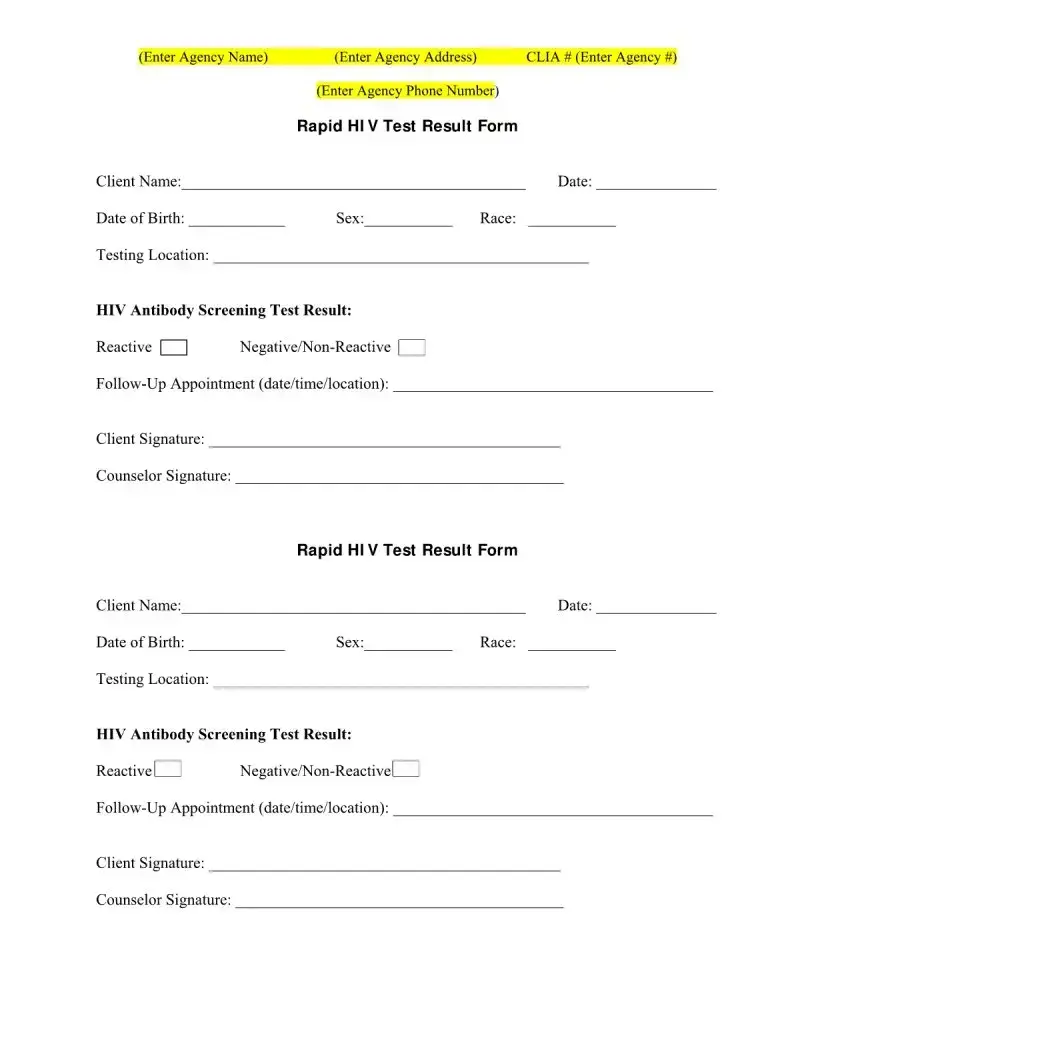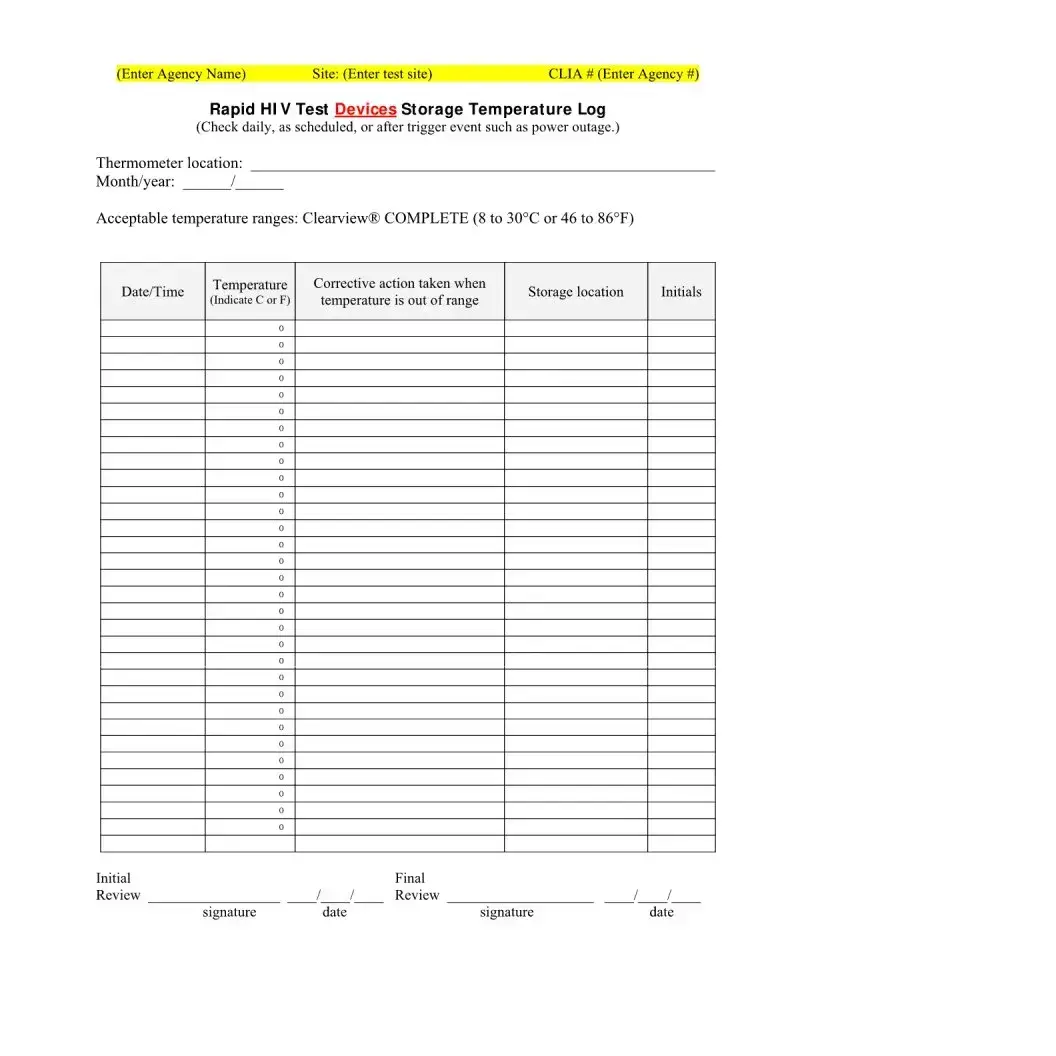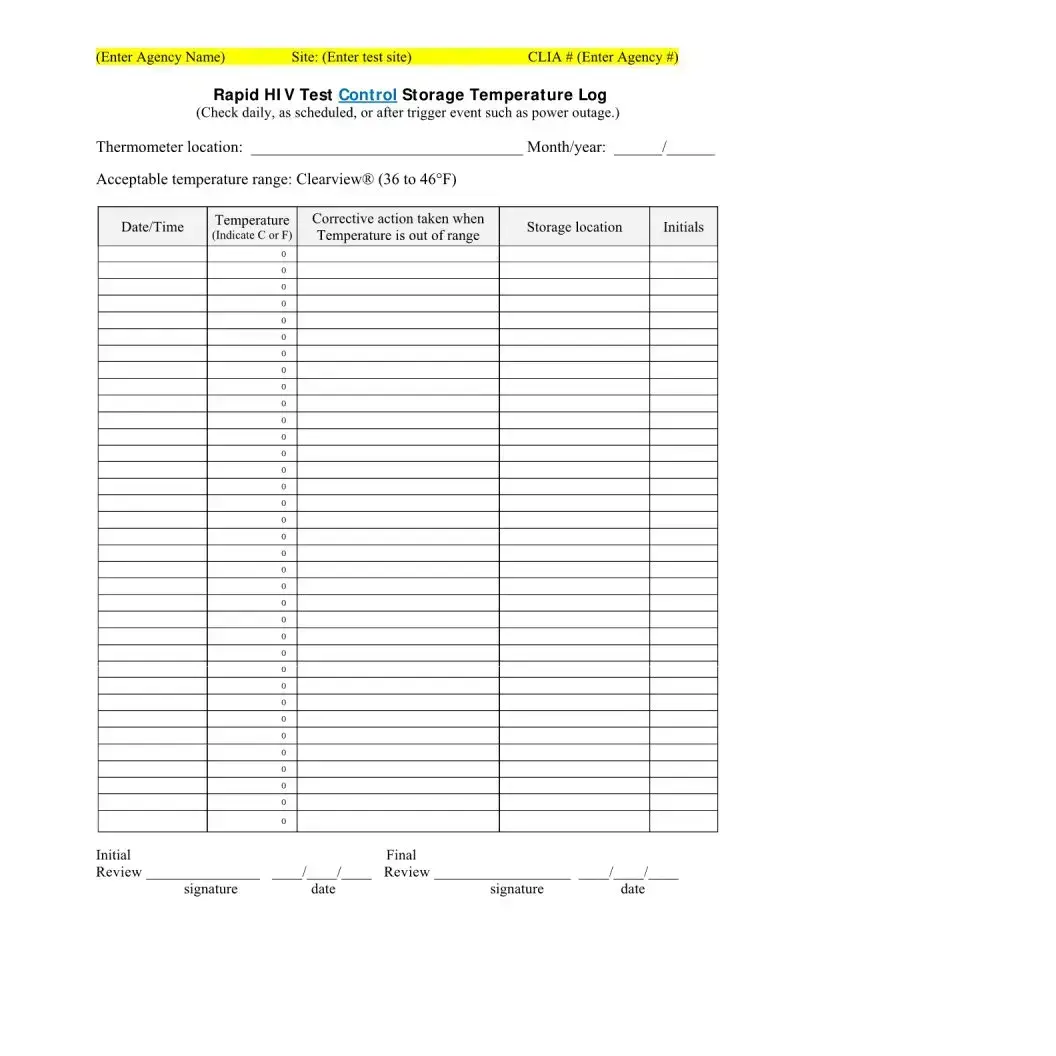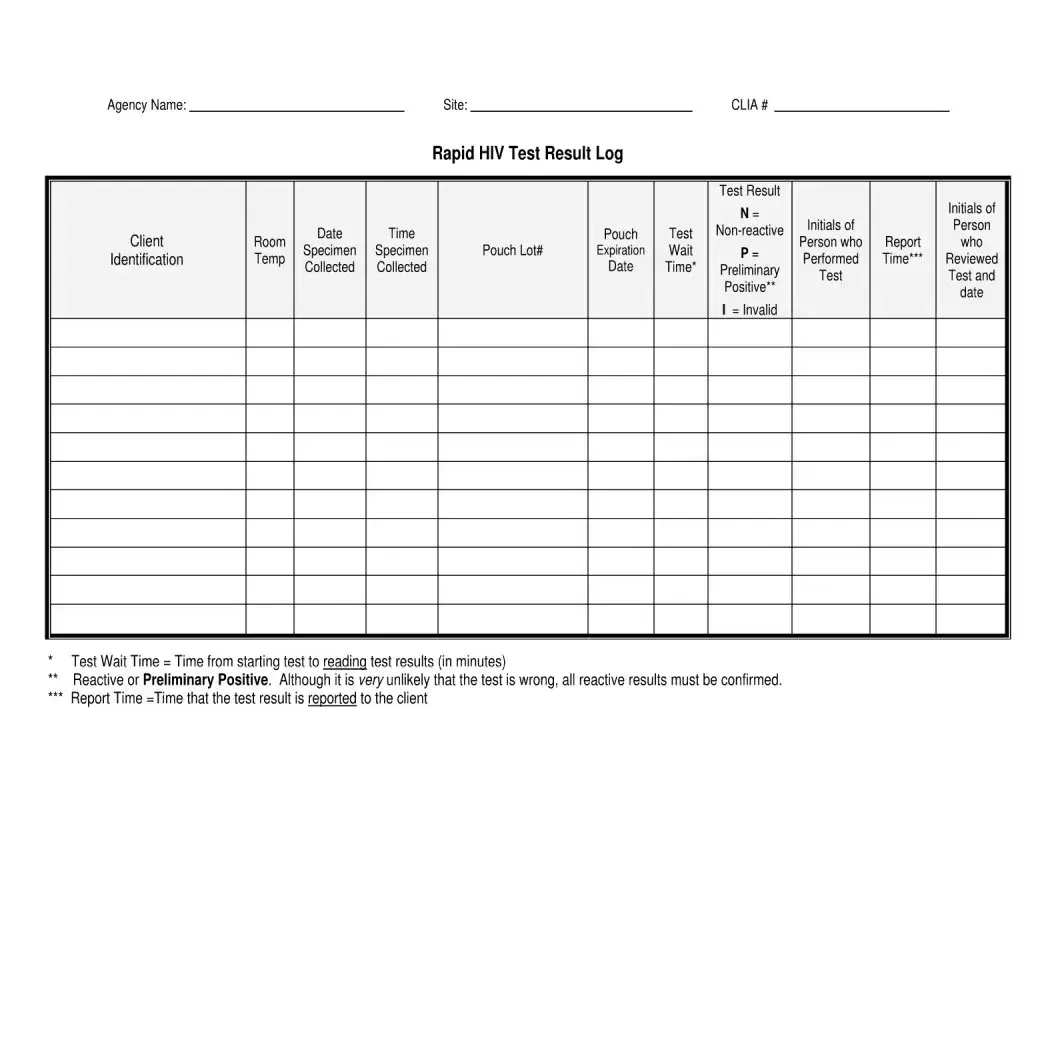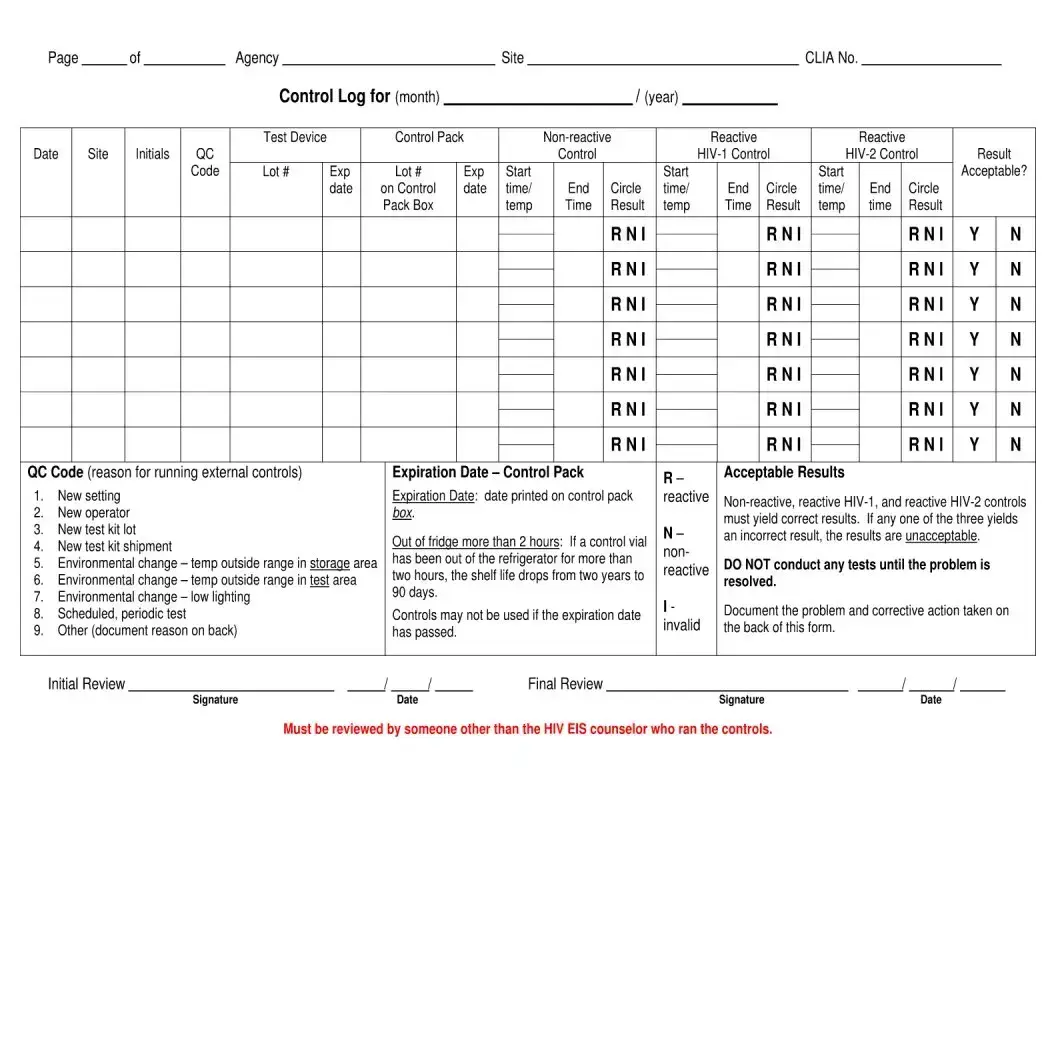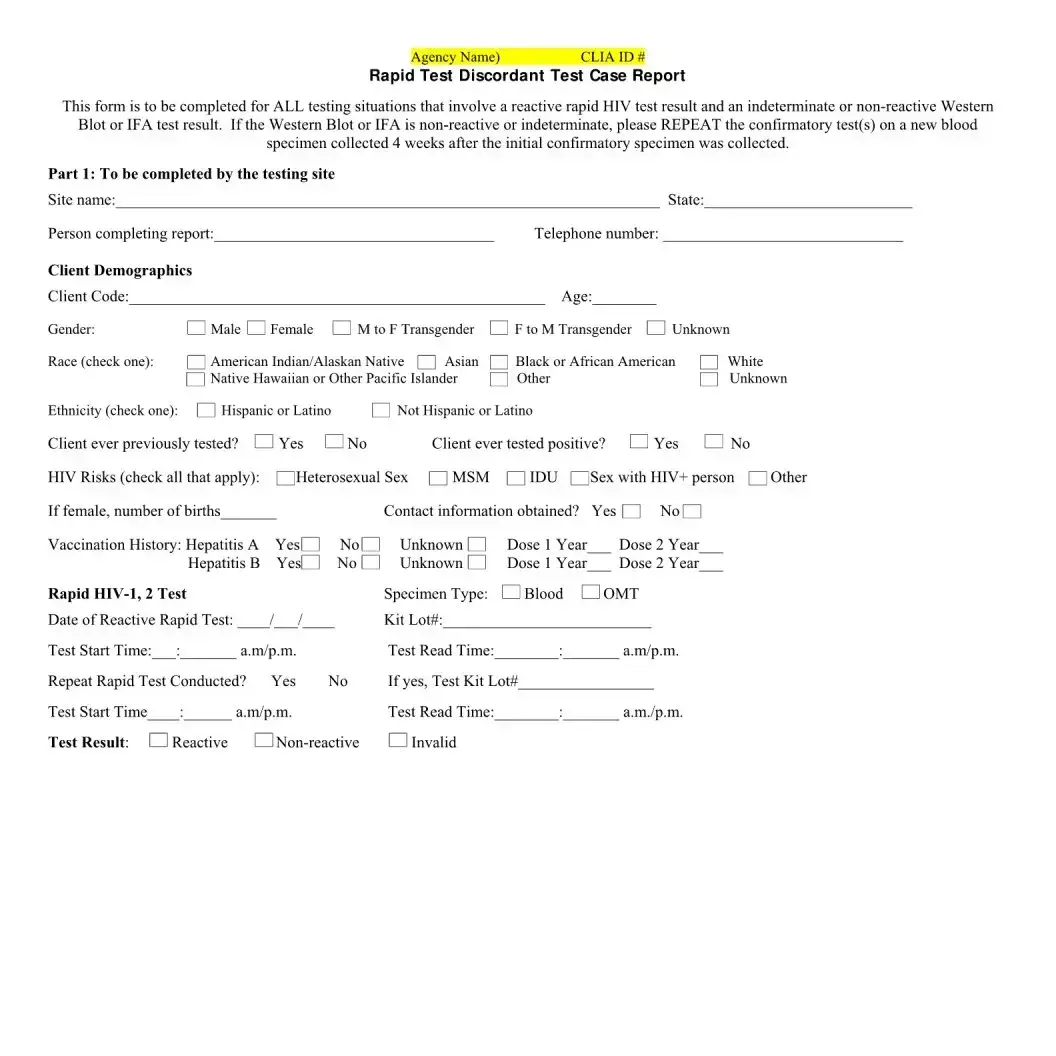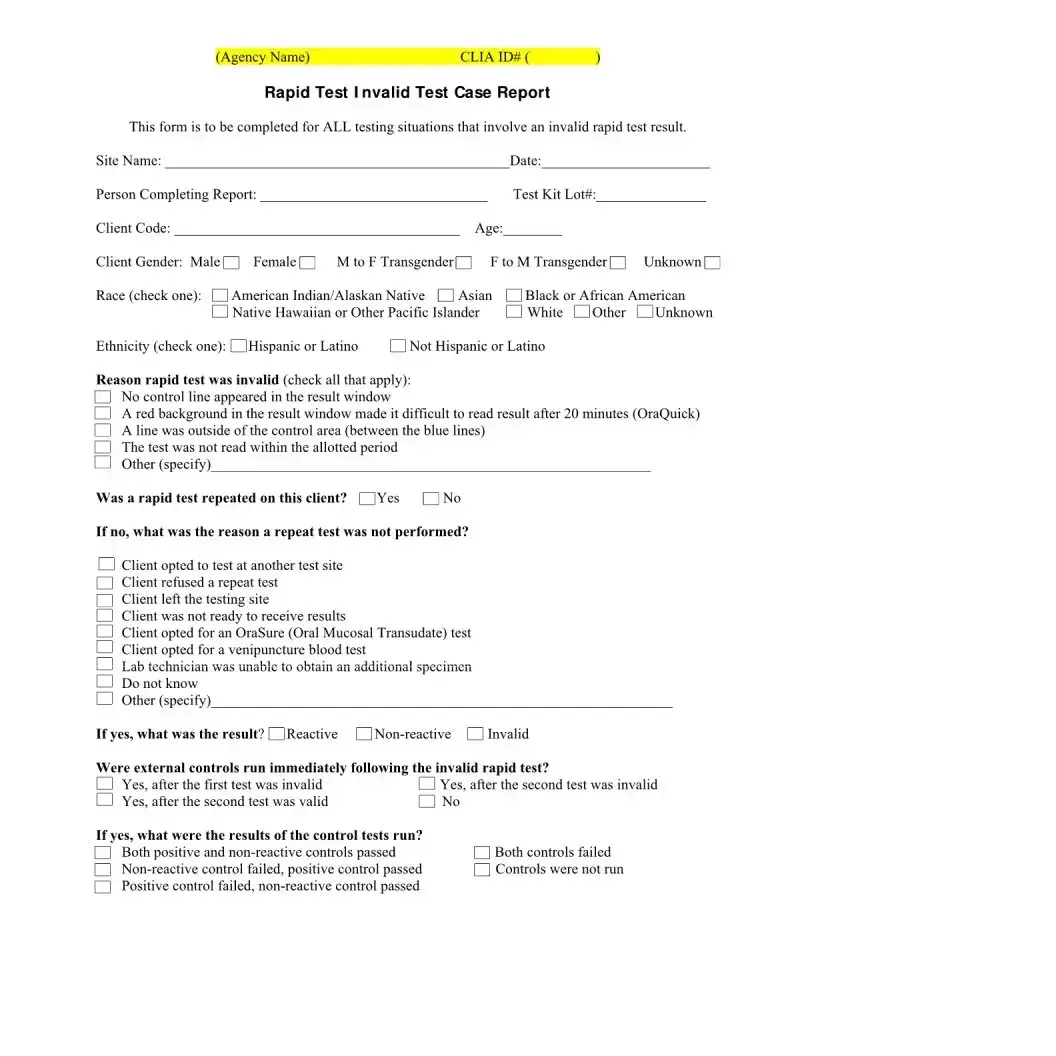Filling out the Negative HIV Test form is a critical step in ensuring accurate and reliable testing. However, there are common mistakes that people often make during this process. Understanding these pitfalls can help individuals and organizations improve their accuracy and efficiency.
One frequent mistake is failing to provide complete client information. Omitting details such as the client name or date of birth can lead to confusion and miscommunication. Each piece of information is essential for tracking test results and ensuring they are linked to the correct individual.
Another common error involves incorrect or incomplete entries in the testing location section. This information is vital for maintaining accurate records and for any necessary follow-up. If the location is not documented correctly, it may hinder future reference or accountability.
People often overlook the importance of accurately recording the HIV antibody screening test result. Whether the result is reactive or non-reactive, it must be clearly indicated. Inaccuracies in this area can lead to misunderstandings about a person's health status.
Moreover, the follow-up appointment section is frequently neglected. Not scheduling a follow-up or failing to provide the necessary details can result in missed opportunities for further testing or counseling. It’s essential to ensure that clients know when and where to return for additional support.
Another mistake is not obtaining the necessary signatures. Both the client signature and the counselor signature are crucial for validating the test result. Missing one or both can create legal and procedural complications down the line.
People sometimes misinterpret the storage temperature requirements for the testing devices. The form outlines specific acceptable ranges, and failure to adhere to these can compromise test accuracy. It’s important to regularly check and document temperatures as required.
Additionally, individuals may forget to complete the Rapid HIV Test Result Log accurately. This log is essential for tracking test results and should include all relevant details such as the time of specimen collection and the initials of the person who performed the test.
Another oversight is neglecting to note the test wait time. This is the period from starting the test to reading the results. Recording this information helps ensure that tests are conducted within the recommended time frames, which can affect the validity of the results.
Lastly, individuals may fail to confirm the report time of the test results. This detail is important for both the client and the healthcare provider, as it marks when the results were communicated. Accurate reporting ensures that clients receive timely information regarding their health status.
By being aware of these common mistakes, individuals can take steps to ensure that the Negative HIV Test form is filled out accurately and completely. This attention to detail not only supports effective testing but also fosters trust and transparency in the healthcare process.
